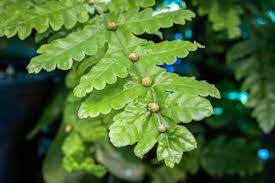Introduction to Pteridophytes
Introduction to Pteridophytes
Pteridophytes represent a diverse group of vascular plants with a distinct life cycle characterized by the alternation of generations between a dominant sporophyte and a reduced gametophyte.
Definition and Number of Species
The term "pteridophyte" is derived from the Greek words "pteron," meaning wing, and "phyton," meaning plant, reflecting the characteristic fronds or fern-like leaves of many species. There are approximately 12,000 species of pteridophytes, ranging from small ferns to towering tree ferns.
https://www.google.comSize Variation
The smallest among them are delicate ferns like Azolla, while the largest include tree ferns like Cyathea and Dicksonia. These plants are found worldwide, thriving in various habitats such as moist forests, tropical rainforests, and even arid regions.
-
Azolla:
- Azolla is a small aquatic fern that typically measures a few centimeters in length.
- The size of Azolla fronds can range from about 1 to 2.5 centimeters.https://www.google.com
-
Cyathea:
www.google.com
- Cyathea is a genus of tree ferns, and its size can vary depending on the species.
- Tree ferns in the Cyathea genus can range from medium-sized to quite large. Some species can grow up to several meters in height, with fronds extending horizontally.
-
Dicksonia:
www.google.com
- Dicksonia, like Cyathea, is a genus of tree ferns.
- Similar to Cyathea, the size of Dicksonia species can vary, but they are generally large ferns. Some species can reach heights of several meters with a massive central trunk and arching fronds.
Ernst Haeckel's Coining of the Term
Ernst Haeckel coined the term "pteridophyte" in the 19th century due to the ferns' distinct leaf structures resembling wings. The reference to "botanical snakes" comes from the sinuous, creeping rhizomes of many pteridophytes, such as those found in certain ferns, which resemble the movement of serpents.
Greek Meaning of Cryptogames
The term "cryptogames" originates from the Greek words "kryptos," meaning hidden, and "gamein," meaning to marry or reproduce. This reflects the hidden reproductive structures of pteridophytes, contrasting with the exposed structures of gymnosperms and angiosperms.
Placement in the Plant Kingdom
Pteridophytes are considered an intermediate group between bryophytes and gymnosperms in the plant kingdom. They share similarities with bryophytes in terms of having a dominant gametophyte stage while resembling gymnosperms in having a vascular system for water and nutrient transport. This intermediate status is reflected in the classification as "lower tracheophytes."
Significance of "Lower Tracheophytes"
The designation "lower tracheophytes" indicates that pteridophytes possess a vascular system but are considered less advanced than gymnosperms and angiosperms. Their evolutionary position as an intermediate step in plant development places them between the non-vascular bryophytes and the seed-producing gymnosperms, making them a crucial link in the evolutionary history of land plants.
History of Pteridophytes
-
Paleozoic Era:
- Pteridophytes have ancient origins, dating back to the late Silurian period (around 420 million years ago) and becoming prominent during the Devonian period.
- During the Paleozoic Era, fern-like plants, ancestors of modern pteridophytes, played a crucial role in colonizing terrestrial environments.
-
Carboniferous Period:
- The Carboniferous period (about 359 to 299 million years ago) is often referred to as the "Age of Ferns" due to the dominance of large tree ferns and other pteridophytes.
- Enormous swampy forests of tree ferns and other vascular plants contributed to the formation of coal deposits.
-
Mesozoic Era:
- Pteridophytes continued to diversify during the Mesozoic Era, coexisting with the rise of gymnosperms and later angiosperms.
- Some pteridophytes evolved into tree-sized forms, similar to modern tree ferns.
-
Cenozoic Era:
- With the onset of the Cenozoic Era (66 million years ago to the present), pteridophytes persisted and adapted to changing environments.
- Today, pteridophytes are represented by a diverse array of species, including ferns, horsetails, and clubmosses.
-
Evolutionary Significance:
- Pteridophytes are considered a pivotal group in plant evolution, representing an intermediate stage between non-vascular plants (bryophytes) and seed-producing vascular plants (gymnosperms and angiosperms).
- The development of vascular tissues in pteridophytes contributed to enhanced transport of water and nutrients, enabling them to thrive in a variety of habitats.
In summary, the history of pteridophytes spans millions of years, showcasing their resilience and adaptability across different geological eras. From ancient fern forests to the diverse forms seen today, pteridophytes have played a crucial role in shaping Earth's terrestrial ecosystems.









7 Comments
Manzar Abbas
ReplyDeleteUni Roll no. 803442
M. Qasim/1289
ReplyDeleteM. Qasim /1289
ReplyDeleteMuhammad Abdullah
ReplyDelete1260
Noor fatima roll no 1226
ReplyDeleteAlia Ashiq
ReplyDeleteRoll No :1252
Abrar Ashraf
ReplyDeleteRoll No : 1268